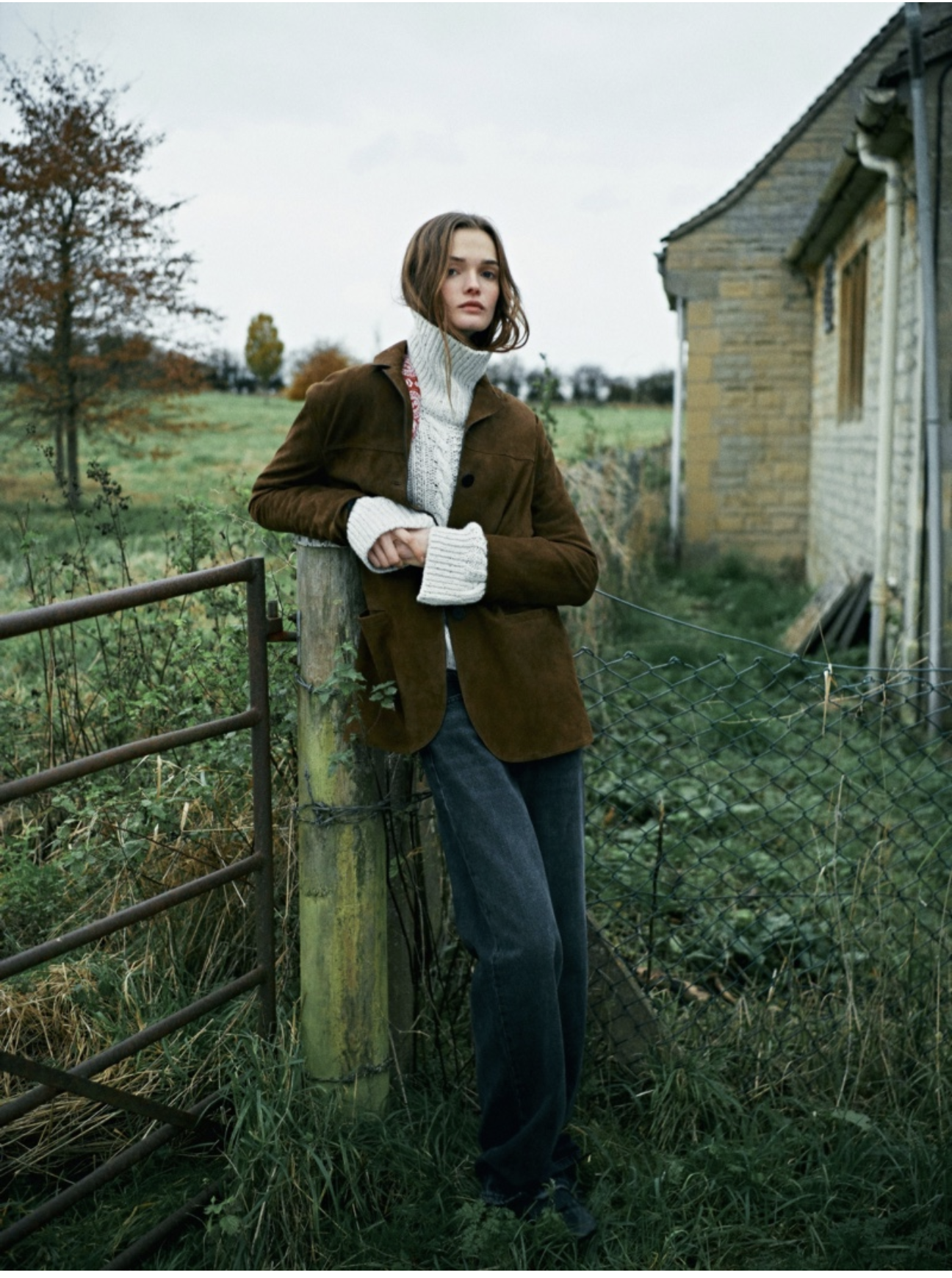Massimo Dutti Take Us to the Cotswolds Winter 2023.24 | AOC Gives a History Lesson
/Spanish premium clothing retailer Massimo Dutti [IG] tags model Luly Tenney for a December 2023 trip to the Cotswolds. Brits can be notoriously practical about their weather, and Massimo Dutti delivers a new winter into spring lesson in how to face abrasive weather elements in style.
Photographer Ed Martin [IG] is a regular photographer for Massimo Dutti and of Lulu Tenney, who also works for the brand. The team rounds out with stylist Vito Castelo.
Tenney shares Part 1 of the Massimo Dutti video Winter 2023 release in this video. I love the Coltswolds in any season, which is why we’re turning next to a bit of a history lesson.
My first trip there is seared into my brain. Of all the places in America that remind me of The Cotswolds, it’s Bucks County PA and my beloved Carversville.
History of the Cotswolds
Nestled in the heart of England, the Cotswolds is a captivating region renowned for its picturesque landscapes, charming villages, and rich historical heritage.
Spanning over six counties, this Area of Outstanding Natural Beauty has witnessed centuries of human history unfold within its rolling hills and limestone valleys.
The history of the Cotswolds dates back thousands of years, with evidence of Neolithic settlements and ancient burial mounds dotting the landscape.
Cotswold History Currently Dates from 4000 BC
The Neolithic period of human history, typically dated 7000-1700 BC — is so important, because it signals the beginning of a settled human lifestyle. People learned to cultivate plants and domesticate animals for food, rather than relying solely on hunting and gathering practices.
On the timeline of humanity — always moving further back in time with new discoveries — the current archaelogical record suggests that human settlements in the Cotswolds date to around 4000 BC.
Excavations have revealed traces of Neolithic long barrows, burial mounds that were used to lay their ancestors to rest. As we move further into the Bronze Age, which spanned from around 2500 to 800 BC, evidence of more complex societies emerges. The construction of round barrows became prevalent during this period as burial customs evolved. These mounds contained not only human remains but also valuable artifacts such as pottery and tools.
The Cotswolds Under Roman Rule
During the Roman occupation of Britain from AD 43 to AD 410, the Cotswolds region experienced significant transformation and integration into the Roman Empire. The Romans recognized the strategic importance of the area due to its natural resources, including its fertile soils and extensive mineral deposits. They established a network of settlements and infrastructure that left a lasting impact on the landscape.
The Romans introduced an array of innovations to the Cotswolds, including advanced agricultural techniques such as terraced farming and irrigation systems. They also constructed extensive road networks, connecting major towns like Cirencester [Corinium] with other important Roman settlements across Britain. These roads facilitated trade, communication, and military movements throughout the region.
Evidence of Roman influence can still be seen today in various archaeological sites scattered across the Cotswolds.
The remains of villas with intricate mosaics showcase luxurious lifestyles enjoyed by wealthy Romans who settled in this area. Excavations have also uncovered artifacts such as coins and pottery, shedding light on daily life during this period.
The Cotswolds also offers a glimpse into its feudal past through its impressive castles and manor houses. Sudeley Castle, for instance, steeped in history and nestled within stunning gardens, was once home to queens and played a significant role during the Wars of the Roses.
Wars of the Roses
We don’t speak of the American movie about a married couple who loathed each other. The Wars of the Roses are dated 1455–1487 and represented a fight over control of the British throne.
Strolling through their narrow streets, one can imagine knights and merchants bustling about in days long past. The Cotswolds also offers a glimpse into its feudal past through its impressive castles and manor houses. Sudeley Castle, for instance, steeped in history and nestled within stunning gardens, was once home to queens and played a significant role during the Wars of the Roses.
Meanwhile, Berkeley Castle stands as a testament to Norman military architecture and holds tales of royal imprisonments.
Tudor And Elizabethan Era: The Cotswolds In A Time Of Change
The Tudor and Elizabethan eras marked a significant period of change and transformation in the Cotswolds. As England experienced political, religious, and social upheavals, the region's landscape and communities were greatly impacted.
During this time, the wool trade continued to flourish in the Cotswolds, making it one of the wealthiest regions in England. The prosperous wool merchants invested their wealth into grand manor houses and churches, leaving behind a legacy of stunning architecture that still graces the landscape today.
The religious changes brought by Henry VIII's break from Rome had a profound effect on the area. Monastic houses and abbeys were dissolved, leading to the destruction or repurposing of many religious buildings. Some ancient churches managed to survive this turbulent period with alterations reflecting new Protestant beliefs. Furthermore, Elizabeth I's reign saw an increased interest in theater and literature throughout England.
Industrial Revolution And Beyond: Modern Developments In The Cotswolds
The Industrial Revolution marked a significant turning point in the history of the Cotswolds, as it did for much of England. While this region had traditionally thrived on agriculture and wool production, the advent of new technologies and industries brought about radical changes. During this period, the Cotswolds experienced a shift towards mechanization and factory-based production. Traditional cottage industries were replaced by large-scale factories, particularly in textile manufacturing.
The area became renowned for its high-quality woollen cloth, which was exported across the country and beyond. The expansion of rail networks during the 19th century further propelled industrial growth in the Cotswolds. This enabled faster transportation of goods to markets, facilitating trade and economic development. The construction of canals also played a crucial role in connecting the region to major cities like Bristol and London.
Despite these positive advances, the impact of industrialization on the Cotswolds was not without consequences. The rapid growth of urban centers led to overcrowding, poor living conditions for workers, and environmental degradation — serious issues that continue to haunt England today.
Elements of this piece of British history played out recently with Chanel’s December 2023 Métiers d'art show in Manchester, England, located 143 miles from The Cotswolds, or about a 2 1/2 hr. drive.
The title of a June 2023 deep dive in The Sunday Times says it all: “How the Cotswolds became the billionaire’s new playground.” Yes, Chanel was on their game holding their Métiers d'art show in Manchester, but for reasons beyond history and having a a truly great Manchester United football [or soccer in the US] team.
Those very expensive champagne glasses are preparing to toast a New Year 2024, not too far down the road.












